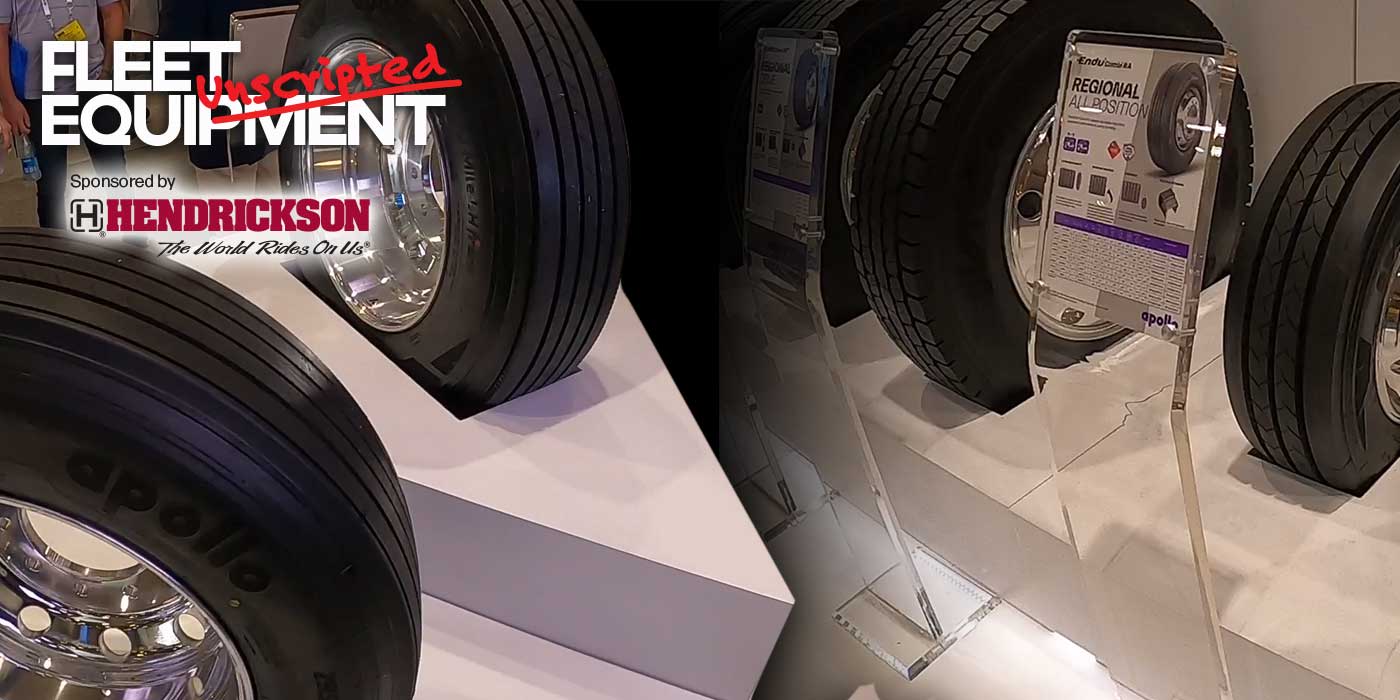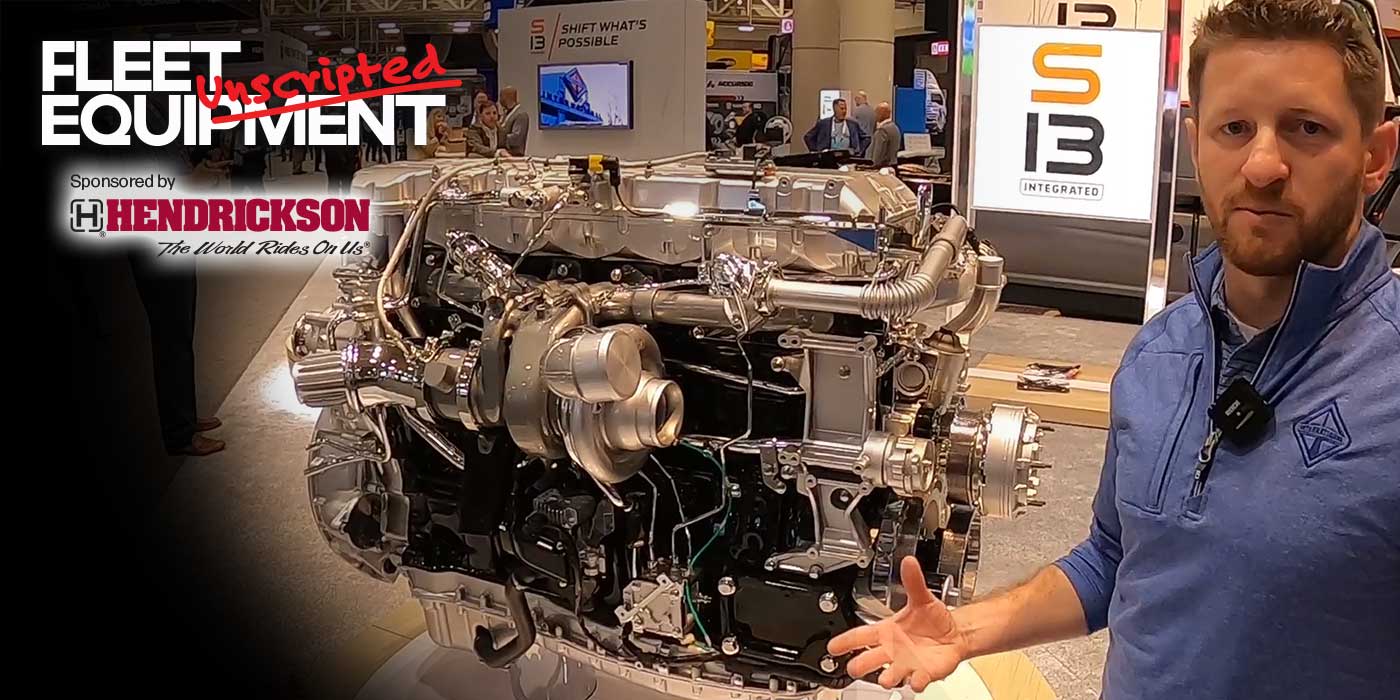It’s time for another case of “good news, bad news.” Let’s start with the bad: The supply chain still isn’t being very kind to fleets. Truck engine products, electrical components, fluids and tires are just a few of the parts and components that remain elusive to some fleets all over the U.S. The good news is that suppliers have learned from problems caused by the pandemic and are evolving their logistics efforts and e-commerce platforms to be stronger than ever.
On this episode of Fleet Uptime, we get in touch with Ken Clinchy, vice president of digital and e-commerce at Fleetpride; and Mike Harris, senior vice president of sales and operations at FleetPride, to learn more about how suppliers are beefing up their eCommerce efforts to help fleets find what they need when parts are scarce.
Looking for more Fleet Uptime? Click here.
Here’s a transcript of the show:
David Sickels: Hello and welcome to Fleet Uptime, another opportunity for us to talk about best practices and technology, truck parts and service to help you maximize equipment uptime, and profitability. My name is David from Fleet Equipment and today I’m happy to welcome back two friends of the show, two masters of Uptime, Ken Clinchy, vice president of digital and e-commerce at FleetPride, and Mike Harris, senior vice president of sales and operations at FleetPride. Today we are talking about the relationship between e-commerce and the supply chain. Let’s get right to it.
Mike, Ken, it’s great to see you two again. I think it’s been a few months now since we talked last in my book. That’s a few months too long because I’ve felt lost without both of you trying to navigate the aftermarket. Trying to navigate how things are going with the supply chain. So I’m really excited to talk to you about that today. And I want to just start by talking about what is the state of the supply chain right now. Are parts getting easier to find or are you seeing maybe some parts even getting harder to find here in 2023?
Mike Harris: Well, hello David and thanks for having us. I would say overall things are improving, but not significantly. Many component manufacturers are still catching up with the significant backlogs we’ve been seeing, but it’s starting to get a little bit better. We’re hearing similar feedback from the major fleets as well as distributors we speak with. I’d say that said, I would say fleet uptime is still going to be impacted by parts availability this year, probably at least through the first quarter or two to help customers. From our perspective, we carry a significant amount of inventory throughout the supply chain in our distribution centers and across all the locations in our parts and service facilities.
The components you ask about if there’s any particular maybe being impacted more than others, it’s still very broad. David, there are categories like tires, you hear fleets complaining about engine products, hydraulics for the upfitters, electrical components, and fluids, just to name a few. So we continue to work closely with the supplier partners, which is really important in the overall process to ensure we’re getting enough allocation to support the high fill rates we need the customers to count on. We want to watch those very closely by product.
We also watch those by geography and identify the alternative solutions as well along the way if there are alternative parts that can help a customer keep moving. I’d say I’d even, I’d add one last point. We learned a ton through the pandemic over the last few years and frankly, our relationship with the customers today, they’re stronger than they’ve ever been because we worked through a lot of very difficult times together, and found ways to keep their trucks up on the road. And I can’t say enough about our team members who go over and beyond day in and day out to solve problems to help the customers.
If we took away one thing over the last few years, and this has really sunk in for our team members. We’ve all seen the real importance of having a strong logistics infrastructure to support our economy. So we know FleetPride plays an important role in that, in keeping our country moving.
David Sickels: I know a big part of that for FleetPride has been your e-commerce platform, obviously very important, especially during those heavy pandemic days. Why is having such a robust e-commerce platform today so important?
Ken Clinchy: David, it’s a great question. Great to see you again and thanks for having us back. So as Mike mentioned, it starts with having the supply chain infrastructure to support our customers and increase their uptime. But our customers are looking more and more for digital solutions and information at their fingertips. They want to be able to self-serve final alternative options and get those options or those products to them. And so our e-commerce platform, and frankly e-commerce in general allows customers to find new suppliers, new alternative product options.
And we’re well positioned here in that we’ve made the investments not just from an e-commerce standpoint, but from an infrastructure standpoint in automating our distribution centers in how we find product for customers. And that all drives a greater selection online. And whether the customer decides to purchase on fleetpride.com or they want to come into a branch and utilize our fantastic parts experts, they can do either/or. And that’s really been the glue for us is time, the online and offline experience. And then customers can choose how they want to interact and then they can also choose when and where they need their parts.
And so as they’re shopping from vendors they might not have used before or buying parts they’re not familiar with, we’re able to provide that to them in a way that’s convenient for the customer to continue to reduce downtime and take care of their customers at the end of the day.
David Sickels: That’s a great point. And kind of keeping the ball rolling there, seeing as how these kinks in the supply chain, there are still a lot of them there. How have you evolved your e-commerce platform to help delay these hindrances for fleets?
Ken Clinchy: As I mentioned, we’re adding a significant number of parts to the site. We just crossed the 1 million park mark, and that’s incredibly important as I mentioned in giving options. Options are great, but they don’t do anything if the customer can’t find what they’re looking for. And so this is where search really plays such a big part in e-commerce and the online journey. They can leverage a counterman when they’re in a branch. We also have a chat feature where they can speak with the parts expert, but if they want to self-serve, it really comes down to parts. And so not only have we invested in getting more parts online, we’re also invested in how you find those.
So we just added a couple of million cross-references to the website. We now have over nine and a half million cross-references, and that’s really to help customers find what they’re looking for. As you know in the heavy-duty industry, product data is difficult to come by and it’s a major investment for us and why we’ve gone out to do the research and understand what our customers need and a lot of times customers are looking for cross references.
The other piece is we have all these parts out there. Customers want to know when they can get them. It’s about lead time. So if I have it and I can’t get it to you in a timely fashion, the part doesn’t really do you that much good. And so one of the other big investments that we’ve made from a technology and an upgrade perspective is putting more accurate lead times on our website. So how quickly can you get that part? That’s incredibly important for our customers, whether they’re shipping it across the country or it’s just coming from a local distribution center. They want to know “when can I get it in my hands to get that truck back on the road?” We’ve really made some big investments and advances in making that easier and more accurate for our customers.
David Sickels: And so obviously having the part when you need it as quickly as possible, that’s going to help a fleet’s uptime. But how else, is there anything else that you’re doing in your e-commerce platform with uptime specifically in mind? Mike, we’ll start with you.
Mike Harris: Well, some additional features that Ken alluded to that help with overall uptime is adding new capabilities for the user to manage their fleet. Some of those fleets have multiple layers of procurement that they need to manage differently. Different assets, trailers, and trucks in different locations. Our e-commerce site today allows for that function and capability for the buyers and maintenance managers within a customer.
If it’s an owner-operator, it solves a lot of problems as well. They can save a tremendous amount of information that’s very specific to their truck, makes the shopping experience, or the next time they need to look up some past purchases or for reference just at their fingertips. We tie all that information as well, David, into the front lines and our employees and team members on the parts counters and in the field that interact with the customer on a day-to-day basis. Creating that circular feedback amongst all team members as well as the customer just adds speed to the process, which is extremely important for uptime.
David Sickels: That makes a lot of sense. Ken, earlier you had mentioned, you just hit a million parts that you’re distributing through your e-commerce site. How do you ensure that you are having these parts where you need them when you need them for these fleets who need them? I mean, a million parts, that’s so much to keep track of.
Ken Clinchy: Absolutely. And it goes back to having the right infrastructure in place as Mike mentioned. The supply chain is so key to being able to serve the customer and you couple that with the product information and the parts experts that we have, and it’s really just one winning team for our customers. And then we also understand how hard it’s been for our customers over the last two years as they struggled with getting parts with constant part increases as we’re seeing from our manufacturers. And so we’re trying to launch new programs to help our customers and benefit our customers who are engaging with us online.
So we’ve talked about it in the past, we have an e-cash program that provides rebates on the parts that customers are already buying when they purchase them online, which is a fantastic way to get money back for those purchases. But we’ve also enhanced that with free shipping now. So we mentioned the million parts, but how do you get those parts to you if you’re not close to a FleetPride branch? And the answer is free shipping. So for customers that are enrolled in our e-cash rebate program, we also offer free shipping now on orders over $200.
And really that was put together as a way to give back to our customers to say, “Hey, we know that it’s not always convenient to come to a FleetPride location,” or, “You want to leverage the rest of our network,” excuse me, “outside of your single branch or the distribution center that you might typically work with. How can we allow you to leverage all 300 of our locations in our five distribution centers?” And so that’s why we launched free shipping. The other thing that we’ve done to help customers better manage their inventory and their purchasing is we’ve put out customer reporting.
So customers are able to self-serve and look at what are they buying, how often are they buying it, and where are they buying it from, and that helps customers to manage their own part spending and have an easier view into what inventory they may have on the shelf. And so we’re trying to put out solutions that really help our customers to better manage their own businesses in a time that’s been very trying for our customer base and we’re doing everything we can not to just supply them with parts, but also to supply them with solutions to help them improve their business.
David Sickels: Excellent. And so we started at the top of this talking about the supply chain. Things are getting better, but it’s still not great. So how do you determine what’s going to be best for you? Is it using e-commerce? Is it going in person? I mean, what are the big advantages to either or?
Ken Clinchy: Mike, do you want to take a shot at this one first?
Mike Harris: Well, I would also note. Sure. I would also talk about and mention all of the investments and the technologies capabilities we’ve built onto the overall company that also ties right into e-commerce and those capabilities. We’ve been busy implementing new technologies that allow us to better serve our customers for some time now, and I’ll give you a few examples. We have our new warehouse management system that’s now up and live in all five distribution centers. That creates a safer environment, but more efficient workflows and order accuracy back to being very important that the right part gets shipped at the right time to the right location.
We’ve expanded our business intelligence capabilities. It’s been hugely important to our progress and that gives us better insights into potential supply chain disruptions. And that allows our inventory planning team to communicate with our suppliers, and find alternative solutions to fill orders at critical times. One more I’ll mention, we’ve now launched our transportation management system in the background, which ultimately gives our customers and our team members on the front lines greater visibility and tracking of the shipments. The more information we can share end-to-end throughout the supply chain, the better partner we will be to all stakeholders, our team members, our suppliers, and our customers throughout the supply chain.
We’re using a lot of new technology to provide data to our customers in real-time, David. Not only can customers log on and check inventory throughout fleetpride.com across the network, but they can also find more details now than ever about the parts themselves. Images, Ken mentioned earlier, the millions of cross-references we’ve added. At the end of the day, our supply chain strategy is to improve and maximize the uptime and improve the overall experience for our customers.
Ken Clinchy: The only thing I’d add there, Mike, is everything that we’ve put in benefits any way that you want to shop with FleetPride, whether that’s online, offline, or connected technologies. Whatever it is, all of these investments that we’re making are really about providing the customer a fantastic experience, however is most convenient for them to interact with FleetPride.
David Sickels: Thank you both, gentlemen. I really appreciate the time once again. Hopefully, we can get together again down the road here maybe sooner this time. I love chatting with you both. Thanks a lot for being on the show.
Mike Harris: It’s always a pleasure, David. Thank you.













